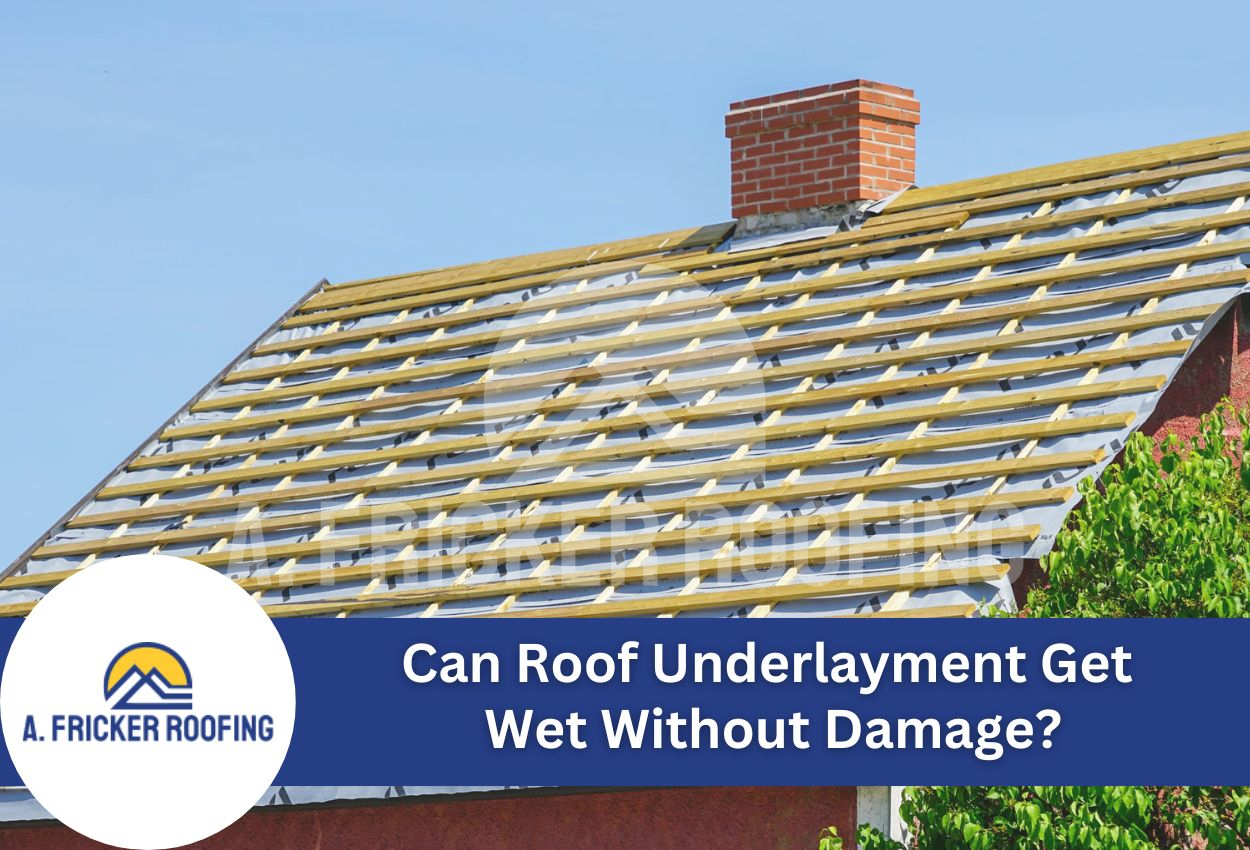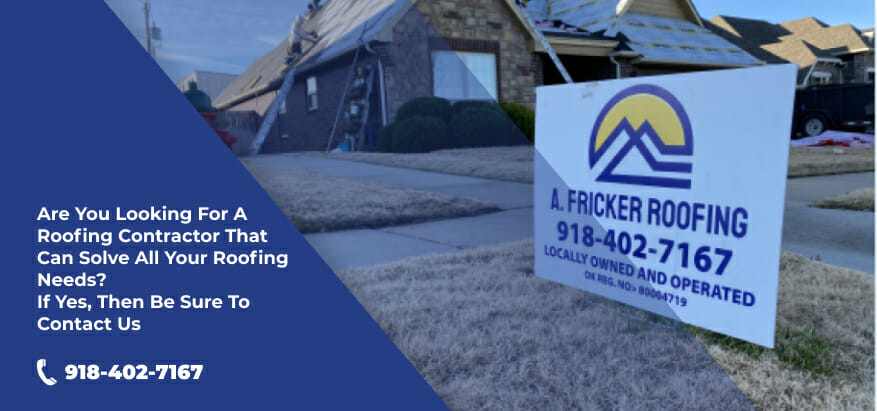Roof underlayment is a critical secondary water barrier beneath shingles and other roofing materials, protecting homes from leaks when the primary roofing system fails or becomes compromised. This protective layer plays an important role in maintaining the structural integrity of roofing systems, yet many property owners wonder if roof underlayment can get wet without sustaining damage.
Several common scenarios result in wet roof underlayment, including installation delays where the underlayment remains exposed to weather conditions before shingle installation, severe storms that drive water beneath roofing materials, and emergency repairs that temporarily expose the underlayment layer. Understanding the moisture resistance of the roof’s underlayment becomes particularly important during these situations.
The choice between synthetic roof underlayment and felt significantly impacts how well the material performs when exposed to water as well. Each material type responds differently to moisture exposure, affecting both immediate functionality and long-term durability of the roofing system.
How Different Underlayment Materials Respond to Moisture Contact
Understanding how various underlayment materials react to water exposure helps property owners make informed decisions about roof underlayment moisture resistance. Traditional felt paper and modern synthetic materials demonstrate significantly different performance characteristics when wet conditions occur.
Traditional felt paper underlayment absorbs water readily due to its organic composition, which includes wood fibers and recycled paper materials. When exposed to moisture for extended periods, felt paper can absorb substantial amounts of water, leading to potential roof underlayment water damage. The material may become saturated, tear more easily, and lose its structural integrity. Wet felt paper can also become slippery and dangerous for roofing contractors during installation or repairs. Additionally, prolonged water exposure may cause felt paper to deteriorate, curl at edges, or develop weak spots that compromise its protective capabilities.
Modern synthetic roof underlayment materials offer superior waterproof roof underlayment protection through engineered polymer construction. These materials resist water absorption and maintain their structural properties even during extended moisture exposure. Synthetic underlayments typically feature non-slip surfaces that remain safer for workers when wet, and their tear resistance remains consistent regardless of moisture conditions. The synthetic roof underlayment vs. felt comparison clearly favors synthetic materials for moisture resistance, as they dry quickly without sustaining damage and continue providing reliable protection throughout their service life, making wet roof underlayment replacement less frequently necessary.
Immediate Effects of Water Contact on Various Underlayment Types
When roof underlayment gets wet, the immediate effects vary dramatically depending on the material composition and construction. Asphalt-saturated felt paper experiences rapid changes upon water contact, beginning with surface absorption that can lead to temporary swelling within the first few hours of exposure. This swelling occurs as the organic fibers within the felt absorb moisture, causing the material to expand and potentially buckle or wrinkle across the roof deck.
Surface moisture retention becomes a significant concern with traditional felt materials, as water can pool on the surface and go deeper into the roof decking or even through into living spaces. The asphalt saturation provides some initial water resistance, but extended exposure allows moisture to compromise the felt’s structural integrity. Wet felt paper also becomes substantially heavier, placing additional stress on roof decking and potentially creating additional challenges for roofing contractors.
Synthetic underlayment materials demonstrate superior performance when exposed to water immediately after contact. These waterproof roof underlayment products resist swelling and maintain their original dimensions even during heavy moisture exposure. The polymer-based construction prevents water absorption, allowing moisture to sheet off the surface rather than getting into the material. This roof underlayment’s moisture resistance means synthetic options remain structurally sound and maintain their protective capabilities without requiring wet roof underlayment replacement after bad weather. The performance differences become particularly evident during emergency repairs when materials must function effectively while wet.
Long-Term Consequences of Prolonged Moisture Exposure on Roof Underlayment
Extended moisture exposure creates serious deterioration patterns that compromise roof underlayment performance over time. When the roof underlayment remains wet for prolonged periods, the material begins experiencing structural breakdown that affects its ability to protect the roofing system effectively.
Traditional felt paper underlayment shows the most dramatic deterioration when subjected to continuous moisture exposure. The organic fibers within felt paper begin breaking down after several days of wetness, leading to tearing along stress points and edges. This process accelerates in warm, humid conditions where the felt remains saturated without adequate drying time. Eventually, the material loses its protective qualities as holes develop and the asphalt saturation washes away, creating pathways for water to get to the roof’s deck.
The adhesive can be damaged significantly when any underlayment type, synthetic or felt, experiences extended wetness. The bonding between underlayment and roof decking weakens as moisture weakens the adhesive on the back, causing sections to lift or separate during high winds. This separation compromises the overall system’s integrity by creating gaps where water can get beneath the protective barrier.
Even waterproof roof underlayment materials can experience long-term effects from continuous moisture exposure, though synthetic options demonstrate superior roof underlayment moisture resistance. While synthetic materials resist immediate damage, prolonged wetness can still affect seam integrity and fastener points. When comparing synthetic roof underlayment vs. felt for long-term moisture exposure, synthetic options require wet roof underlayment replacement far less frequently, making them more reliable for areas prone to extended wet conditions.
Warning Signs That Indicate Wet Underlayment Requires Professional Assessment
Recognizing the warning signs of compromised wet roof underlayment helps property owners determine when professional evaluation becomes necessary. Several visual indicators from ground level can alert homeowners to potential roof underlayment water damage needing immediate attention.
Sagging sections along the roofline indicate that underlayment materials have absorbed significant moisture and have lost their structural integrity. This sagging occurs when traditional felt paper becomes waterlogged and weighs down portions of the roofing system. Visible discoloration appearing as dark streaks or patches across roofing surfaces often signals that moisture has gotten through compromised underlayment layers. Property owners may also notice visible damage, such as lifted or curled edges of roofing materials, which could mean the roof underlayment system has failed to provide the protection needed to keep the entire system safe.
Interior warning signs provide equally important indicators of moisture resistance failure. Water stains appearing on ceilings or walls directly beneath roof areas indicate that moisture has gotten past the underlayment barrier. These stains typically develop distinctive patterns that help identify the source and extent of underlayment compromise. Leak patterns become visible as expanding rings or irregular shapes that grow larger during storms. Additional interior signs include musty odors in upper levels of the home, peeling paint or wallpaper near ceiling areas, and visible mold growth in attic spaces. When these symptoms appear, underlayment replacement often becomes necessary to restore proper protection and prevent further structural damage to the roofing system.
Determining When Wet Underlayment Requires Immediate Replacement
Several factors determine whether the wet roof underlayment needs immediate replacement or can continue providing an adequate amount of protection. The duration of water exposure is the primary consideration, as materials respond differently to brief water contact versus prolonged saturation.
Short-term water exposure lasting less than 24 hours typically allows most waterproof roof underlayment materials to dry without sustaining permanent damage. However, felt paper may begin showing signs of compromise within hours of continuous exposure, particularly when environmental conditions prevent proper drying. Temperature and humidity levels significantly influence replacement decisions, as hot, humid conditions accelerate deterioration while cool, dry weather allows materials to recover more effectively. Wind exposure also affects drying rates and material stability, with high winds potentially causing additional damage to weakened wet underlayment.
Material type considerations play an equally important role in replacement decisions. Traditional felt paper typically requires wet roof underlayment replacement after 48 to 72 hours of continuous moisture exposure, especially when visible swelling, tearing, or separation occurs. Synthetic materials demonstrate superior roof underlayment moisture resistance and may withstand weeks of exposure without requiring replacement, depending on manufacturer specifications.
Manufacturer specifications provide specific guidelines for acceptable moisture exposure limits that vary significantly between products. These specifications outline maximum exposure times, acceptable moisture levels, and conditions that void material warranties. Following manufacturer recommendations ensures proper roof underlayment water damage assessment and helps contractors make informed replacement decisions that maintain roofing system integrity and warranty coverage.
Prevention Strategies and Best Practices for Protecting Roof Underlayment from Water Damage
Effective protection of the roof underlayment from water damage requires planning and careful timing throughout roofing projects. Professional roofing contractors implement specific prevention strategies to minimize moisture exposure risks and maintain the integrity of waterproof roof underlayment systems during installation and material storage.
Installation timing focuses on weather monitoring techniques that help contractors schedule underlayment installation during the best conditions. Weather forecasting plays an important role in preventing roof underlayment water damage, as contractors should avoid beginning installation when rain is predicted within 24 to 48 hours. Professional weather monitoring services provide detailed precipitation forecasts that allow roofing teams to plan installation schedules effectively. Wind speed monitoring also becomes essential, as high winds can drive moisture beneath temporary coverings and compromise exposed underlayment materials.
Temperature considerations affect both installation timing and material performance, with synthetic roof underlayment vs. felt having different installation temperature ranges that are best for their adhesive and better for the material as a whole. Cold-weather installations require additional precautions as materials become more brittle and prone to tearing during handling. Hot weather installations present challenges with material expansion and worker safety on heated surfaces.
Proper storage methods protect underlayment materials before installation begins and during project delays. Materials should remain in their original packaging until they are ready for installation, stored in dry, ventilated areas away from direct ground contact. Temporary protection measures include waterproof tarping systems and breathable coverings that prevent moisture accumulation while allowing air circulation. These storage practices maintain roof underlayment moisture resistance and prevent the need for wet roof underlayment replacement due to improper handling or storage damage.
Get Expert Wet Roof Underlayment Replacement in Tulsa with A. Fricker Roofing and Waterproofing
If you’re noticing signs of wet underlayment, such as sagging, discoloration, or water stains inside your home, it’s important to act swiftly to prevent further damage. A. Fricker Roofing and Waterproofing specializes in diagnosing and resolving issues related to wet roof underlayment. Our team of experts understands the critical nature of quick intervention and uses the best materials suited for your specific roofing needs, whether it’s traditional felt or advanced synthetic options. Don’t let prolonged moisture exposure jeopardize the structural integrity of your roof.
Call A. Fricker Roofing and Waterproofing today at (918) 402-7167 for a professional assessment and ensure your roof remains strong and waterproof.

